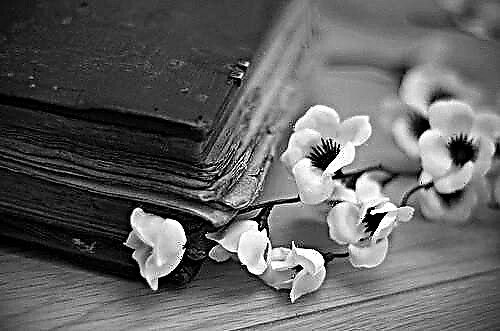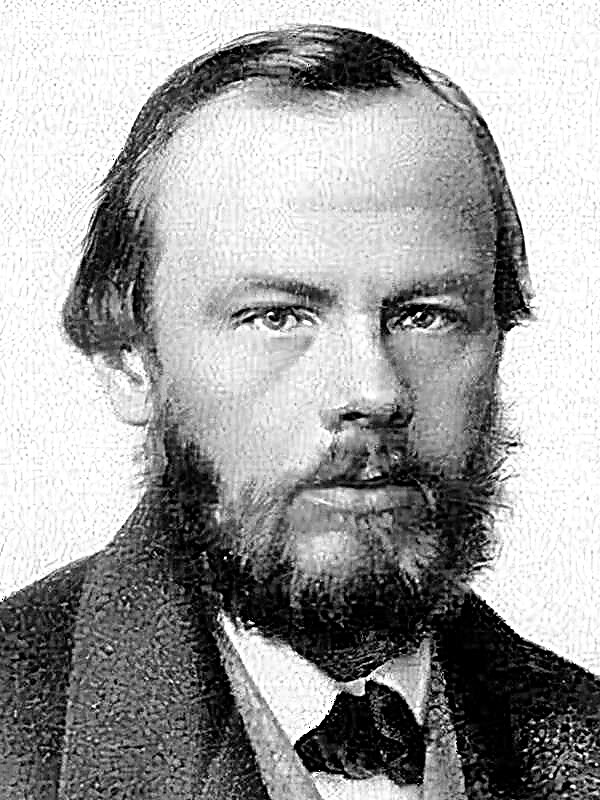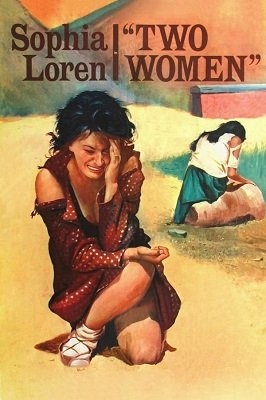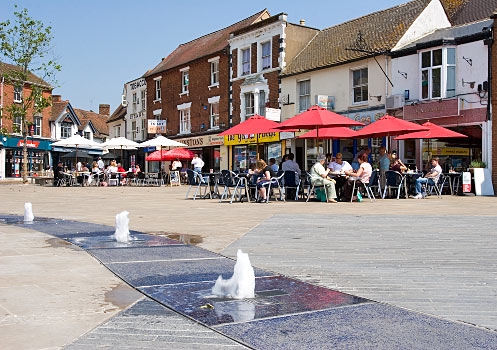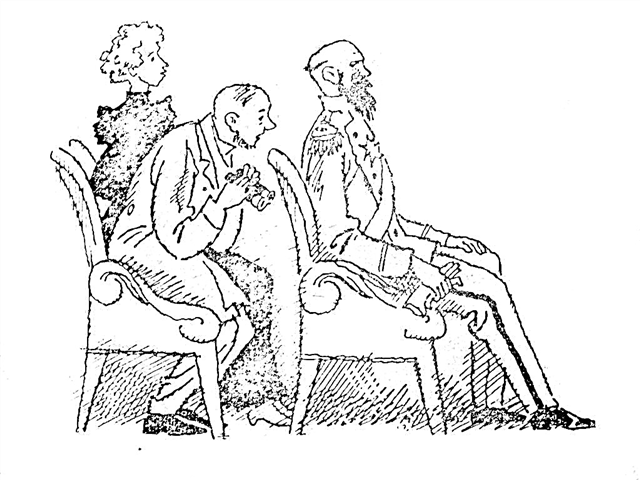An important place in world art is the era of romanticism. This trend lasted quite a small amount of time in the history of literature, painting and music, but left a big mark in the formation of trends, the creation of images and plots. We suggest that you familiarize yourself with this phenomenon.
Definition and meaning of the term
Romanticism is an artistic direction in culture, characterized by the image of strong passions, an ideal world and the struggle of the individual with society.
The word "romanticism" at first had the meaning of "mystical", "unusual", but later acquired a slightly different meaning: "different", "new", "progressive".
History of occurrence
The period of romanticism falls on the end of the 18th century and the first half of the 19th century. The crisis of classicism and the excessive publicism of the Enlightenment led to a transition from a cult of reason to a cult of feeling. The connecting link between classicism and romanticism was sentimentalism, in which feeling became rational and natural. He became a peculiar source of a new direction. The romantics went further and completely plunged into irrational thoughts.
The origins of romanticism began to emerge in Germany, in which the literary movement Storm and Onslaught was by then popular. His adherents expressed quite radical ideas, which served to establish among them a romantic rebellious mood. The development of romanticism continued in France, Russia, England, the USA and other countries. The founder of romanticism in painting is considered Caspar David Friedrich. The ancestor in Russian literature is Vasily Andreevich Zhukovsky.
The main trends of romanticism were folklore (based on folk art), byronic (melancholy and loneliness), grotesque-fantastic (depicting the unreal world), utopian (search for the ideal) and Voltaire (description of historical events).
Key Features and Principles
The main characteristic of romanticism is the prevalence of feeling over reason. From reality, the author takes the reader to an ideal world or languishes on it. From here one more sign - the double world, created according to the principle of "romantic antithesis".
Romanticism can rightfully be considered an experimental direction in which fantastic images are skillfully woven into works. Escapism, that is, a departure from reality, is achieved by the motives of the past or by immersion in mysticism. As a means of avoiding reality, the author chooses fiction, past, exotic or folklore.
The display of human emotions through nature is another feature of romanticism. If we talk about the originality in the image of a person, then often he appears before the reader as lonely, atypical. The motive of the “superfluous person” appears, a rebel who has become disillusioned with civilization and is fighting against the elements.
Philosophy
The spirit of romanticism was saturated with the category of the sublime, that is, the contemplation of the beautiful. Adherents of the new era tried to rethink religion, explaining it as a sense of infinity, and put the idea of inexplicability of mystical phenomena above the ideas of atheism.
The essence of romanticism was the struggle of man against society, the predominance of sensuality over rationality.
How did romanticism
In art, romanticism manifested itself in all areas except architecture.
In music
Composers of romanticism looked at music in a new way. The melody sounded the motive of loneliness, a lot of attention was paid to the conflict and double-heartedness, with the help of a personal tone, the authors added autobiography to the works for expression, new techniques were used: for example, expanding the timbre of the sound palette.
As in literature, interest in folklore appeared here, and fantastic images were added to operas. The main genres in musical romanticism were previously unpopular songs and miniatures, which passed from classic opera and overture, as well as poem genres: fantasy, ballad and others. The most famous representatives of this direction: Tchaikovsky, Schubert and Liszt. Examples of works: Berlioz “Fantastic Story”, Mozart “The Magic Flute” and others.
In painting
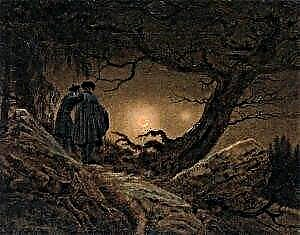 The aesthetics of romanticism has its own unique character. The most popular genre in romanticism paintings is landscape. For example, one of the most famous representatives of Russian romanticism, Ivan Konstantinovich Aivazovsky, has a stormy sea element (“Sea with a Ship”). One of the first romantic artists, Caspar David Friedrich, introduced a third-person landscape into the painting, showing the person from the back against a background of mysterious nature and creating the feeling that we are looking through the eyes of this character (examples of works: “Two contemplating the moon”, “Rocky Shores of Ryugin Island ”). The superiority of nature over man and his loneliness is especially felt in the painting "Monk on the Seashore."
The aesthetics of romanticism has its own unique character. The most popular genre in romanticism paintings is landscape. For example, one of the most famous representatives of Russian romanticism, Ivan Konstantinovich Aivazovsky, has a stormy sea element (“Sea with a Ship”). One of the first romantic artists, Caspar David Friedrich, introduced a third-person landscape into the painting, showing the person from the back against a background of mysterious nature and creating the feeling that we are looking through the eyes of this character (examples of works: “Two contemplating the moon”, “Rocky Shores of Ryugin Island ”). The superiority of nature over man and his loneliness is especially felt in the painting "Monk on the Seashore."
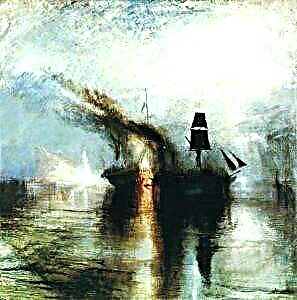 Fine art in the era of romanticism became experimental. William Turner preferred to create canvases with sweeping strokes, with almost imperceptible details ("Blizzard. Steamboat at the entrance to the harbor"). In turn, the harbinger of realism, Theodore Gericault, also painted little resemblance to images of real life. For example, in the picture “The Raft of Medusa” people starving to death look like athletically built heroes. If we talk about still lifes, then all the objects in the pictures are staged and cleaned out (Charles Thomas Bale "Still Life with Grapes").
Fine art in the era of romanticism became experimental. William Turner preferred to create canvases with sweeping strokes, with almost imperceptible details ("Blizzard. Steamboat at the entrance to the harbor"). In turn, the harbinger of realism, Theodore Gericault, also painted little resemblance to images of real life. For example, in the picture “The Raft of Medusa” people starving to death look like athletically built heroes. If we talk about still lifes, then all the objects in the pictures are staged and cleaned out (Charles Thomas Bale "Still Life with Grapes").
In literature
If in the era of the Enlightenment, with rare exceptions, there were no lyric and lyroepic genres, then in romanticism they play a major role. The works are distinguished by imagery, originality of the plot. Either this is an embellished reality, or these are fantastic situations at all. The hero of romanticism has exceptional qualities that influence his fate. Books written two centuries ago are still in demand not only among schoolchildren and students, but also among all interested readers. Examples of works and representatives of the direction are presented below.
Abroad
Among the poets of the beginning of the 19th century, Heinrich Heine (book of Songs), William Wordsworth (Lyric Ballads), Percy Bysshe Shelley, John Keats, and George Noel Gordon Byron - the author of the poem Pilgrimage of Childe Harold, can be named. Walter Scott's historical novels (for example, “Ivanhoe"," Quentin Dorward "), novels by Jane Austen ("Pride and Prejudice"), Poems and short stories by Edgar Allan Poe ("Raven», «Asher House Fall"), The stories of Washington Irving (" The Legend of Sleepy Hollow ") and the tales of one of the first representatives of the romanticism of Ernest Theodore Amadeus Hoffmann (" The Nutcracker and the Mouse King ","Baby Zahez»).
Also known are the works of Samuel Taylor Coleridge (The Tales of the Old Sailor) and Alfred de Musset (Confession of the Son of the Century). It is noteworthy how easy the reader gets from the real world to the fictional and vice versa, as a result of which they both merge into one. This is partly achieved by the simple language of many works and a laid-back narration of such unusual things.
In Russia
The founder of Russian romanticism is considered to be Vasily Andreevich Zhukovsky (elegy "Sea", Ballad"Svetlana"). From the school curriculum everyone is familiar with the poem of Mikhail Yurievich Lermontov “Mtsyri”, Where special attention is paid to the motive of loneliness. It was not for nothing that the poet was called the Russian Byron. The philosophical lyrics of Fyodor Ivanovich Tyutchev, early poems and poems by Alexander Sergeyevich Pushkin, poetry of Konstantin Nikolaevich Batyushkov and Nikolai Mikhailovich Yazykov - all this had a great influence on the development of domestic romanticism.
The early work of Nikolai Vasilyevich Gogol is also represented in this direction (for example, mystical novels from the cycle “Evenings on a Farm Near Dikanka"). It is interesting that romanticism in Russia developed in parallel with classicism and sometimes these two directions did not contradict each other too sharply.


 Viscount de Brazhelon
Viscount de Brazhelon
